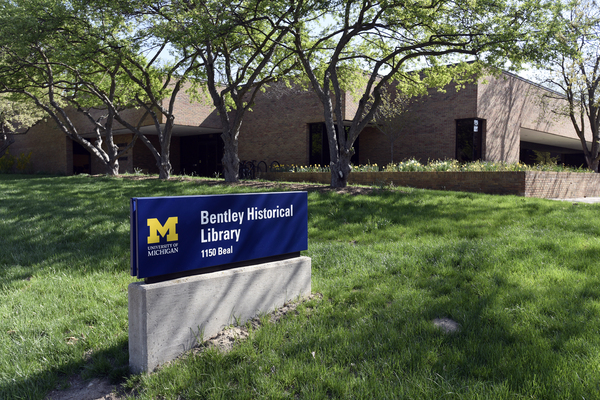Claude Thomas Stoner Photographs and Papers, 1870s-1977
9 linear feet (in 13 boxes)
The Stoner collection contains about 3,600 photographs and negatives collected by Stoner, relating primarily to Michigan railroads. The collection also contains related manuscript materials.
Stoner's major collecting interests were in the Ann Arbor, Grand Trunk Western, and Pere Marquette Railroads and their predecessors, and in logging railroads, especially Ephraim Shay's railroad and others using Shay locomotives. Along with these lines, the collection contains photos of dozens of other railroads, not all in Michigan.
The photographs most commonly depict locomotives, often with their crews posed beside. Other common subjects are railroad stations (exteriors only), train wrecks, trains in motion, logging operations, carferries, railroad bridges, the Detroit-Windsor railroad tunnel, and street railroads.
Dozens of Michigan cities and towns and a number of places in other states are represented in the collection. Places depicted most often in the photos include Ann Arbor, Cadillac, Detroit, Durand, Frankfort, Harbor Springs, and Howell, Michigan, and Windsor, Ontario.
The collection is organized into seven series: Classified photos, Unclassified photos, Albums, Unclassified negatives, Papers, Classified negatives, and Duplicate material.
Appended to this finding aid are two indexes, one for railroads and company names, the other for subjects. The indexes contain references to all items in the Classified photos, Unclassified photos, Albums, and Unclassified negatives series.
The index to railroads and company names indexes logging and industrial companies that operated railroads, as well as railroad lines themselves. It does not index locomotive manufacturers, nor does it index the names of railroad museums where some of the photos were taken.
The index to subjects indexes place names and topical subjects. It does not index the term "locomotives" since the majority of the photos in the collection would be indexed under that heading. Place names are indexed if the photo includes a view of some part of the place or of some event at the place. Close-up views of locomotives that do not show any background are not indexed by place, even if the description of the photo identifies where it was taken.
